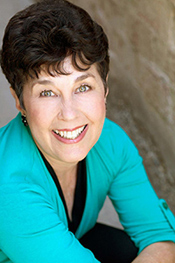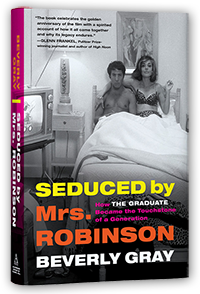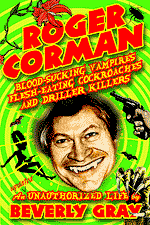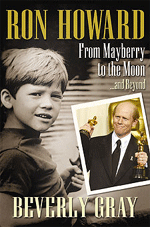I hardly pay close attention to the Grammy Awards. My passion is film, not pop music, and such groups as Daft Punk mean nothing to me. What struck me about this year’s ceremony was the appearance onstage of several icons of my own era. Carole King, of Tapestry fame, powerfully dueted with Sara Bareilles, almost young enough to be her granddaughter. In the pop instrumental album category, the victor was none other than Herb Alpert, whose Tijuana Brass provided a peppy soundtrack for my college days. But of course the big nostalgia moment came when Paul McCartney and Ringo Starr performed together.
It was, all in all, a Beatles year. Not only did both McCartney and Starr receive lifetime achievement awards but Paul picked up a statuette for co-writing (with the surviving members of Nirvana) something called “Cut Me Some Slack,” voted 2013’s best rock song. It turns out we’re closing in on the 50th anniversary of the Beatles’ first appearance in the United States. On February 9, 1964, they rocked the Ed Sullivan Show, and my generation has not been the same since. To celebrate, CBS has just taped a two-hour tribute that will air on February 9, 2014. I wonder exactly who’ll tune in.
The Beatles became famous as musicians, of course. But at one time they also made serious waves as the stars of their own movies. Much of the credit must go to Richard Lester, a young TV director from Philadelphia. Lester attracted the attention of the madcap British actor Peter Sellers, who was looking to translate the exuberant goofiness of The Goon Show into visual form. In 1960, Lester shot The Running Jumping & Standing Still Film, a black-and-white short featuring Sellers, Spike Milligan, and other zanies romping through the English countryside, armed with eccentric props. No one spoke, but there was the occasional outlandish sound effect, as well as a bouncy jazz score.
The Beatles, particularly John Lennon, enjoyed the offhand eccentricity of Lester’s work, which is how he came to direct the low-budget film first intended by its Hollywood studio, United Artists, to be mostly a tool for promoting a soundtrack album. Instead, A Hard Day’s Night -- now considered one of the best rock ‘n’ roll films of all time -- is a cheeky look at four appealing young men trying their best to elude their own fame. Lester’s hand-held camera and frequent jump cuts capture the hyperkinetic mood of the era, and contribute to the sense of the Fab Four as literally running away from their fans and handlers to seek their own form of freedom. Their on-screen personas (John as a smart-ass; Paul as sweet and sensible; George as shy; Ringo as endearingly awkward) seem real, and remain lodged in our brains, as does Lester’s much-imitated quirky style (see below).
Lester’s second Beatle film, Help!, is in color, and has an actual plot. It’s a spoofy comic adventure story with certain James Bond echoes, plus Ringo (of course) as the Beatle who almost gets sacrified by an evil eastern cult. Of the foursome, only Ringo went on to pursue an actual acting career, almost always playing eccentric roles (like the Mexican gardener in Candy). He has also done his share of whimsical children’s television shows, such as Shining Time Station.
As for Richard Lester, he ultimately went mainstream in a big way, directing everything from The Three Musketeers to Robin and Marian to 1980’s Superman II. Oscars have eluded him, but last year the Los Angeles Film Critics honored his career achievement. What took them so long?
Speeaking of musicians, a fond farewell to the ageless Pete Seeger, whose eventful life has just ended. I never met him, but he felt like a favorite musical uncle. His music will never die, so long as there’s a campfire to sing around.








This comment has been removed by the author.
ReplyDeleteGood stuff Beverly, but I'd like to remind you that each of the Beatles pursued a film career, not just Ringo. The very first cover of Rolling Stone featured John in costume for Richard Lester's How I Won the War. He and Yoko also made some experiemtnal films and who knows what he might've done cinematically had he lived. Paul also got in the game briefly with the film Give My Regards to Broad Street, costarring Ringo. George stayed behind the camera as a producer but his company, Handmade Films, gave Monty Python a proper venue for their films as well as several other films that never would have seen the light of day.
ReplyDeleteJust saying, it wasn't just Ringo....
How right you are, Dwayne. I'd forgotten for the moment about 1967's How I Won the War, which of course was shot by Lester while he was still rather avant-garde in his filmmaking. I believe John's famous granny glasses evolved from his period costume for this film. And Yoko Ono was making odd little movies even before she met John. Thanks for reminding me too that HandMade Films was originally the brainchild of George Harrison. Where would we be without The Life of Brian?
ReplyDeleteI enjoy Lester's work - his directorial efforts for the Salkinds are the biggest in scope, but actually not nearly as interesting as a film like Robin and Marian. I love the Beatles - though as a Bond fan I tend towards Help! a bit more - there's no denying that A Hard Day's Night is a true classic. (And I'm with you on the Grammys and music - it's not my cup of tea. A lot of my online friends are gaga over that Daft Punk - and Gaga for that matter - but they do little for me either.)
ReplyDeleteSomeday I'll write more about the early, kooky Lester, whose idiosyncratic work I've enjoyed, though not always. I fondly remember The Knack, a relic of the Swinging London era, My father adored what Lester did to A Funny Thing Happened on the Way to the Forum, but Larry Gelbart (who wrote the original play) told me he absolutely loathed the film. I personally have strong feelings about Petulia, a movie that doesn't quite seem sure what it's trying to do.
ReplyDelete